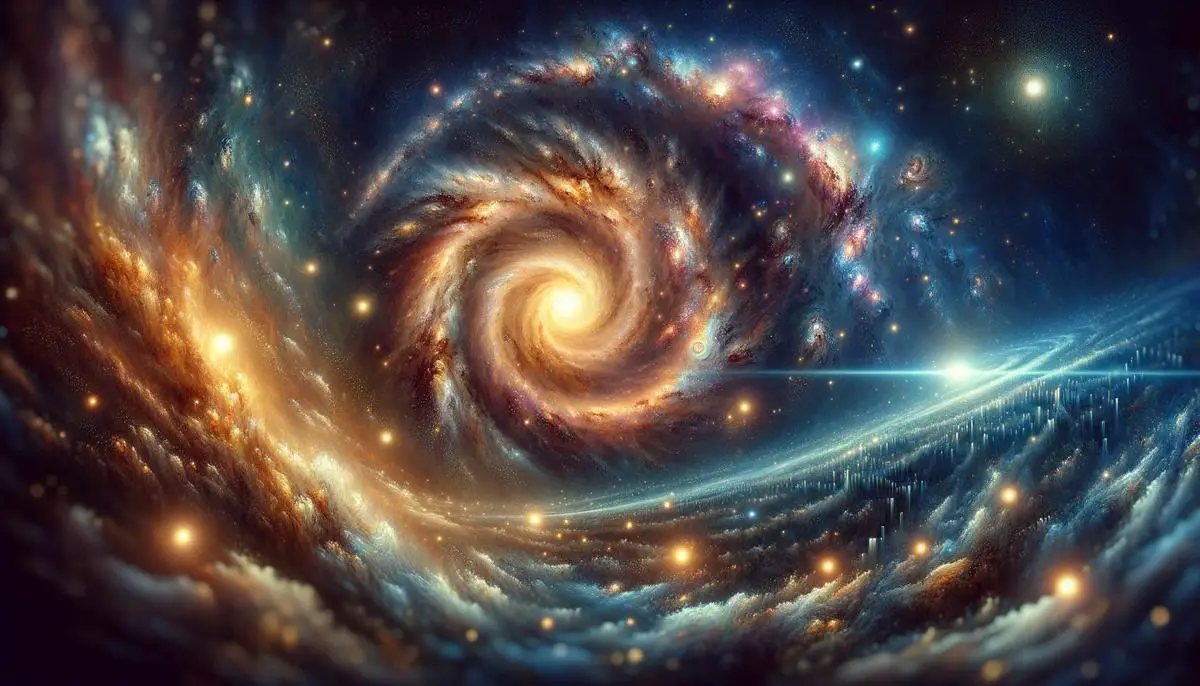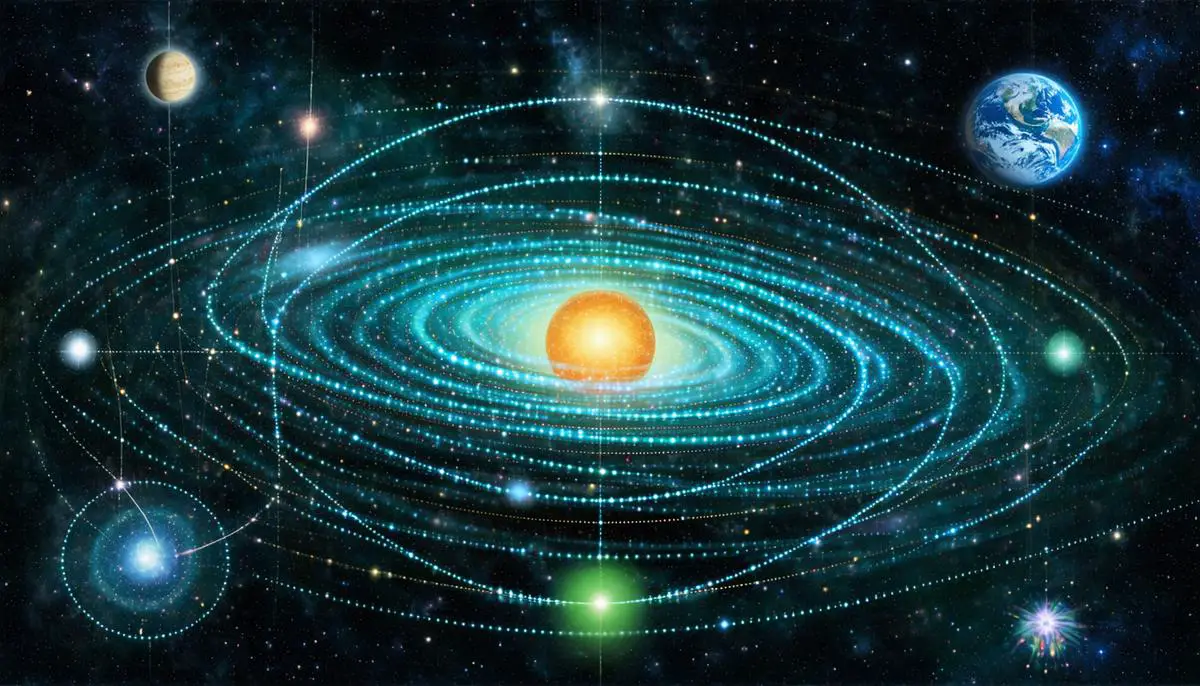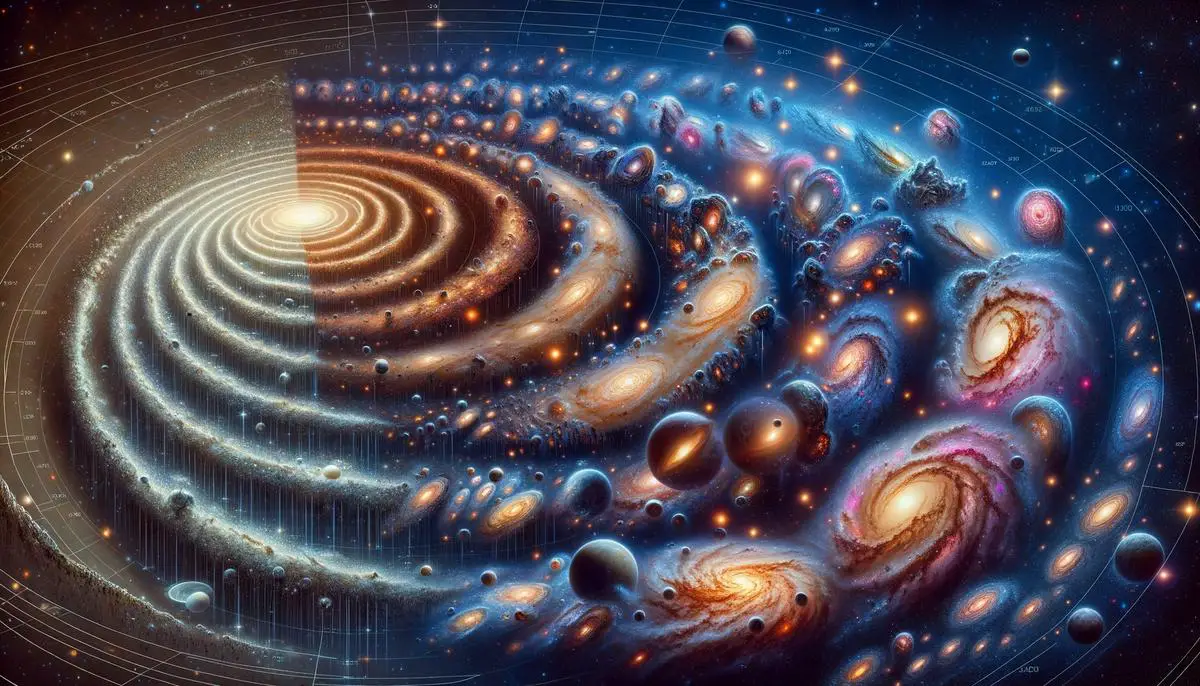Current Estimates and Methods
The age of the universe is a fundamental question in cosmology, with current estimates centering around 13.82 billion years, based on data from the European Space Agency's Planck mission. However, discrepancies in measurements of the Hubble constant—which quantifies the universe's expansion rate—have led to a paradox known as the "Hubble tension."
The Hubble Space Telescope, using Cepheid variable stars, estimates the Hubble constant at 73.2 kilometers per second per megaparsec. In contrast, the Planck mission, analyzing cosmic microwave background data, suggests a slower expansion rate of 67.8 km/s per megaparsec. This discrepancy has significant implications for our understanding of cosmic history.
If the faster expansion rate is accurate, it could indicate a younger universe of about 12.6 billion years. This presents a conundrum, as some observed stars, like the Methuselah star, appear to be older than this revised cosmic age. These inconsistencies have led scientists to consider alternative explanations, including potential roles for dark matter and dark energy, or even revisions to our understanding of gravity.
Challenges to the Standard Model
Recent observations have challenged the standard cosmological model. The James Webb Space Telescope has revealed galaxies with unexpected maturity and mass in the early universe, mere hundreds of millions of years after the Big Bang. This "impossible early galaxy problem" has prompted scientists to reconsider fundamental aspects of cosmic evolution.
Some researchers are exploring whether fundamental constants, such as those governing particle interactions, may have evolved over time. This concept, first proposed by physicist Paul Dirac, could potentially explain the advanced galactic evolution observed in the early universe.
The Methuselah star presents another challenge, with age estimates reaching up to 16 billion years—older than the currently accepted age of the universe. These anomalies, combined with the ongoing Hubble tension, suggest that our understanding of cosmic history may be incomplete or flawed.
These challenges to the standard model may point towards new frontiers in physics, prompting a reevaluation of theories about dark matter, gravity, and the fundamental nature of the universe.

Alternative Theories and New Discoveries
Alternative theories challenging conventional understanding of the universe's age have gained attention. The "tired light" theory, proposed by Fritz Zwicky in the 1920s, suggests that cosmic electromagnetic energy might lose intensity over vast distances. This could potentially explain redshift observations without relying solely on cosmic expansion.
Another intriguing concept is the evolution of coupling constants, which govern particle interactions. If these constants have changed over time, it could account for the surprisingly advanced galactic development observed in the early universe.
The James Webb Space Telescope has provided unprecedented views of early galaxies, revealing structures that appear too mature for their supposed age. These observations have reignited discussions about the accuracy of our cosmic timeline and the processes of galactic evolution.
"What are those three dots that weren't there before? Could that be a supernova?" – Brenda Frye's team observing a gravitationally lensed supernova
While these alternative theories propose significant revisions to our understanding of cosmic history, they remain subjects of rigorous scientific scrutiny. The possibility of a much older universe challenges established models and invites further exploration and debate within the scientific community.

Implications of a Revised Universe Age
A substantial revision to the age of the universe would have far-reaching implications for cosmology. If the universe were indeed twice as old as currently estimated—around 26.7 billion years—it would necessitate a reevaluation of many aspects of our cosmic understanding.
- Provide more time for early galaxies to evolve
- Potentially resolve the puzzle of mature galaxies observed in the cosmic dawn
- Affect our understanding of dark matter and dark energy
- Impact theories about fundamental constants governing particle interactions
Such a revision might require new physics to explain cosmic evolution over this extended timeline. It could prompt reconsideration of theories about gravity, the nature of dark matter, and the mechanisms of cosmic expansion.
This expanded cosmic history would invite a reexamination of the entire narrative of universal evolution, from the Big Bang to the formation of galaxy clusters. It underscores the dynamic nature of scientific understanding and the potential for groundbreaking discoveries to reshape our cosmic perspective.

Future Research and Observations
Upcoming astronomical missions promise to advance our understanding of cosmic chronology. The Nancy Grace Roman Space Telescope and ESA's Euclid mission are set to provide unprecedented insights into dark energy, dark matter, and galactic evolution.
The Roman Space Telescope, with its wide field of view and advanced infrared capabilities, will map billions of galaxies to elucidate the effects of dark energy on cosmic expansion. Euclid will focus on measuring galactic shapes and gravitational lensing effects, offering crucial data on dark matter distribution and potentially resolving the Hubble tension.
These missions could provide the precision needed to reconcile current discrepancies in age and expansion rate estimates. They may confirm existing theories, reveal new variables, or potentially revolutionize our understanding of cosmic history.
As these new observatories prepare to explore the universe's earliest epochs, they promise to enrich our cosmic narrative, potentially resolving long-standing debates and opening new frontiers in our quest to understand the universe's true age and evolution.

The age of the universe remains a central question in cosmology, challenging our understanding of cosmic evolution. As new observations and theories emerge, they promise to refine or potentially revolutionize our concept of cosmic history, driving forward our quest for knowledge about the vast expanse of space and time.
- Gupta R. JWST early Universe observations and ΛCDM cosmology. Monthly Notices of the Royal Astronomical Society. 2023.
- Riess AG, et al. A Comprehensive Measurement of the Local Value of the Hubble Constant with 1 km/s/Mpc Uncertainty from the Hubble Space Telescope and the SH0ES Team. Astrophysical Journal Letters. 2022.
- Frye B, et al. A gravitationally lensed supernova with an observable two-decade time delay. Nature. 2024.
- Helton J, et al. Photometric detection at 7.7 μm of a galaxy beyond redshift 14 with JWST/MIRI. Nature Astronomy. 2024.
![]()
